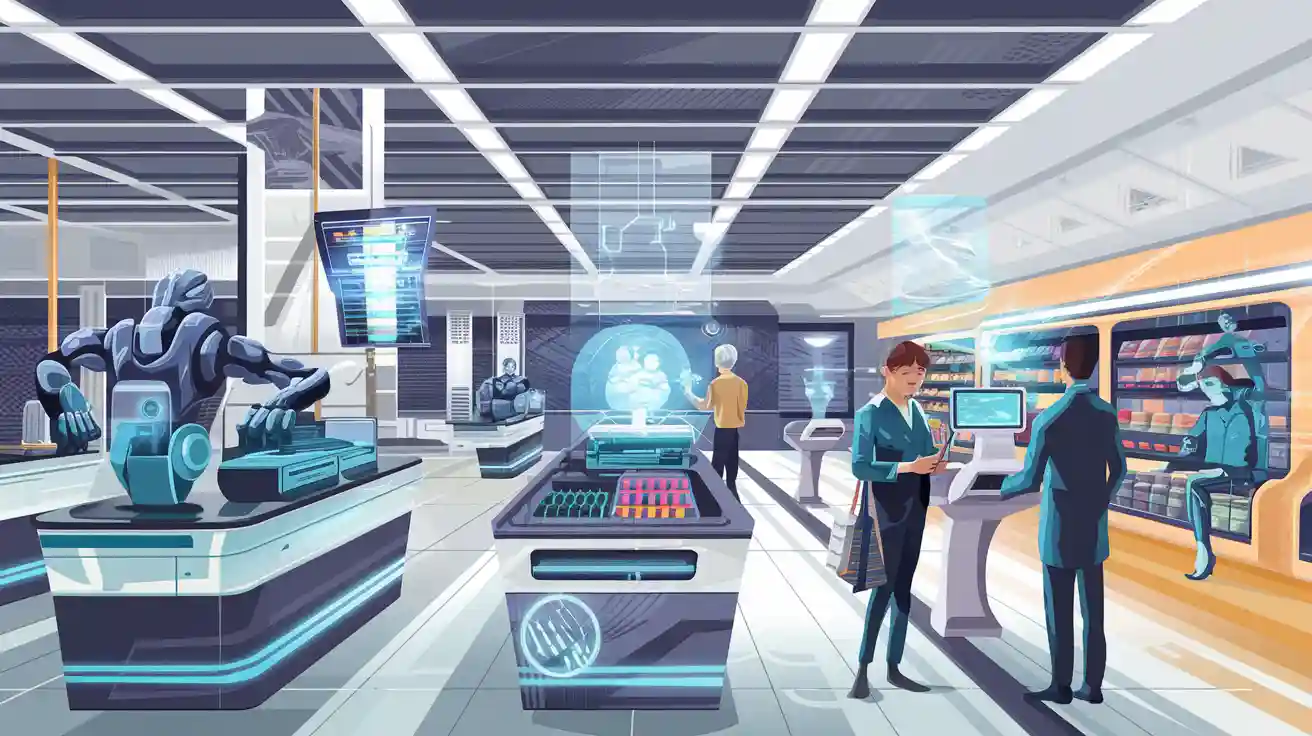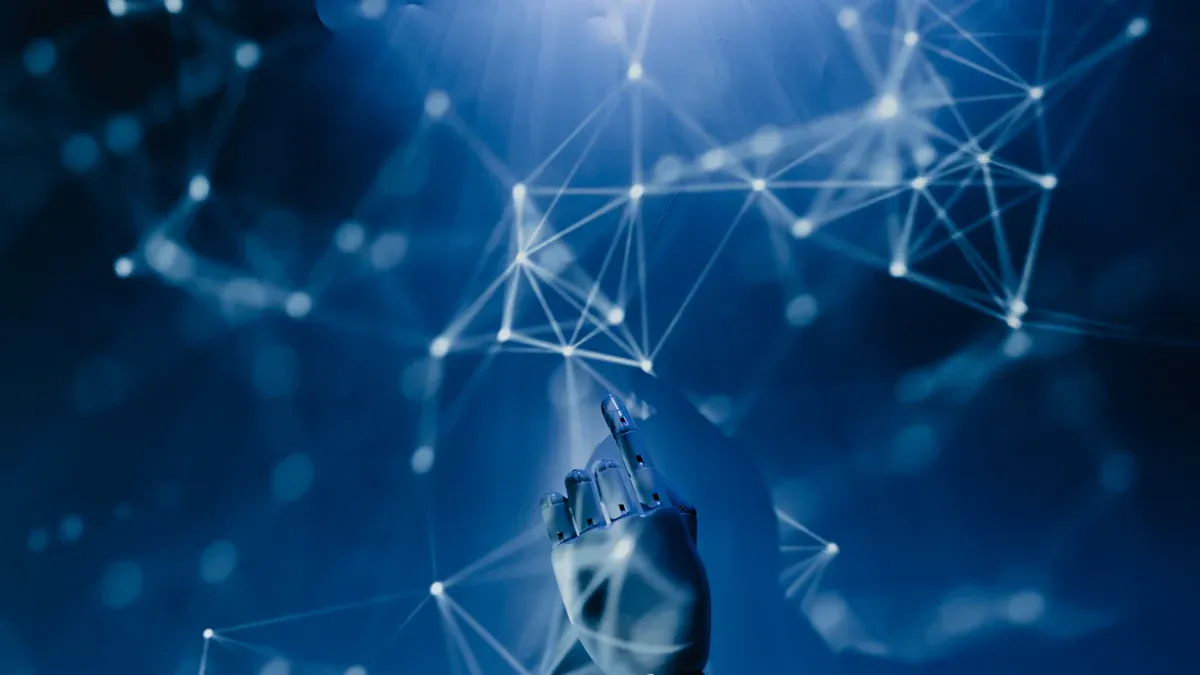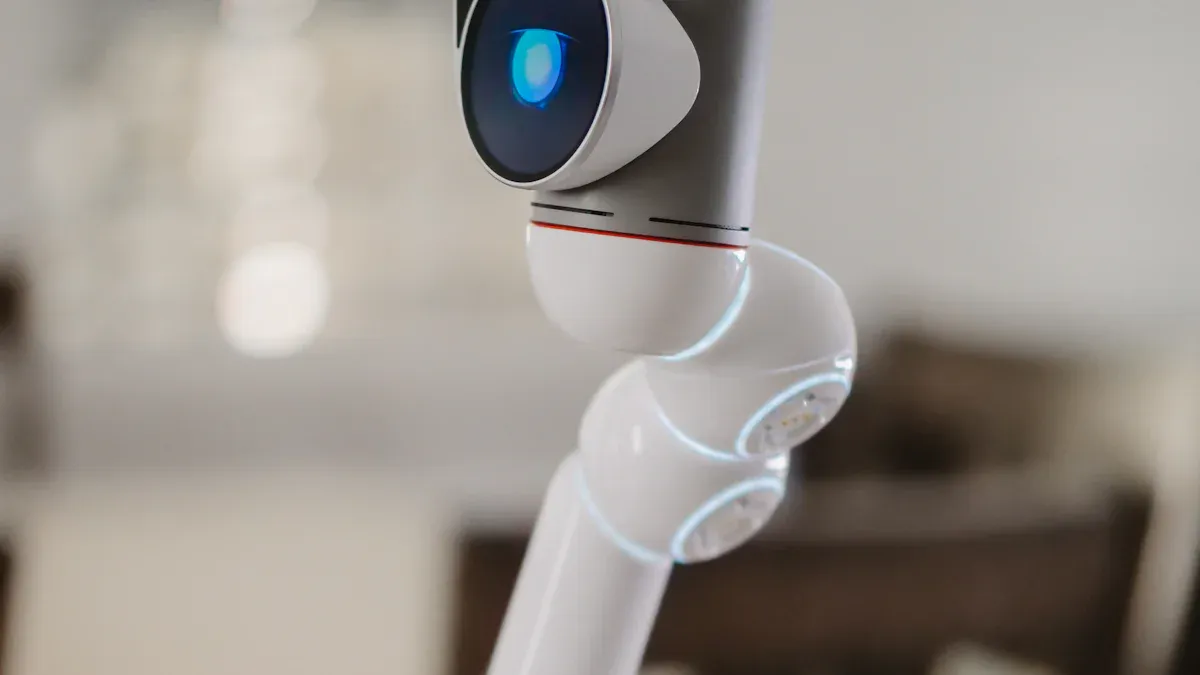
AI unmanned retail stores use cutting-edge technology to simplify shopping. Advanced AI and IoT systems create seamless operations, from entry to checkout. Innovations like biometric authentication and AI-driven analytics improve security and efficiency. With projected growth to $75 billion by 2033, these stores are reshaping the retail industry.
Key Takeaways
-
AI stores use face or fingerprint scans for safe entry. This makes sure only approved people can go inside.
-
Tracking systems watch what items customers pick in real-time. This lets people shop without scanning each product themselves.
-
Self-checkout systems remove waiting in lines. Customers can leave with their items while AI adds up the cost for them.
How AI Unmanned Retail Stores Work

Entry and Access Control Systems
When you enter an AI unmanned retail store, advanced access control systems ensure a smooth and secure experience. These systems often rely on biometric verification, such as facial recognition or fingerprint scanning, to authenticate your identity. AI algorithms analyze your biometric data with remarkable accuracy, reducing failure rates to as low as 0.08%. This ensures that only authorized individuals gain entry, enhancing security and safety.
Unmanned stores also use pre-payment systems, a concept proven reliable by unmanned gas stations in Europe. These systems prevent unauthorized access and minimize theft risks. For example, biometric systems incorporate liveliness detection to verify that the data comes from a live individual, not a mask or photograph. This technology is widely used in high-security environments like hospitals and corporate offices, showcasing its reliability.
Tip: Many stores now integrate scan & go technology into their entry systems, allowing you to link your account for faster access.
Product Selection and Tracking Mechanisms
AI unmanned retail stores use sophisticated tracking mechanisms to monitor product selection. As you pick up items, IoT sensors and computer vision systems track your choices in real time. These systems rely on neural network architectures to identify products accurately, even in densely packed shelves. Specialized algorithms address challenges like varying product sizes and scales, ensuring operational efficiency.
The efficiency of these mechanisms is measured using metrics like mean Average Precision (mAP), which evaluates detection accuracy. This technology allows you to shop without scanning each item manually, streamlining the process. Enhanced data collection also helps stores forecast demand and improve inventory management.
Note: Some stores use a scan & go app to let you view your cart in real time, making it easier to track your purchases.
Payment and Checkout Automation
Self-checkout systems in automated stores redefine the payment process. Instead of waiting in line, you can simply walk out with your items. AI-powered systems automatically calculate your total and charge your linked account. Vision-powered systems significantly improve operational efficiency and reduce cart abandonment rates by 17%.
A comparison of traditional and automated payment systems highlights their advantages:
|
Feature/Metric |
Traditional Systems |
Vision-Powered Systems |
|---|---|---|
|
Customer Experience Improvement |
Moderate |
Significant |
|
Operational Efficiency |
Low |
High |
|
Cart Abandonment Rate |
High |
Reduced by 17% |
|
Sales Increase |
N/A |
8.4% |
|
Customer Return Rate |
N/A |
27% |
These systems also enhance security and safety by minimizing human errors during transactions.
Exit and Security Protocols
Exiting an unmanned self-checkout store is as seamless as entering. AI systems verify that all items in your cart have been accounted for before you leave. Security cameras and IoT sensors monitor the exit process to prevent theft. These systems use real-time monitoring to detect suspicious activity and alert store personnel if necessary.
Unmanned stores prioritize security and safety by integrating advanced protocols. For instance, AI algorithms analyze behavioral patterns to identify potential risks. This ensures a safe shopping environment for all customers.
Tip: Many stores now use automated systems to send you a digital receipt immediately after you exit, making record-keeping effortless.
Technologies Behind Unmanned Stores

AI Algorithms and Predictive Analytics
AI algorithms play a crucial role in optimizing operations in unmanned stores. These algorithms analyze vast amounts of data to predict inventory needs and customer preferences. By processing real-time data, AI models continuously refine their forecasts, ensuring that shelves remain stocked with high-demand items.
Performance metrics like Mean Absolute Percentage Error (MAPE) and Root Mean Square Error (RMSE) evaluate the accuracy of these predictions.
|
Metric |
Description |
|---|---|
|
MAPE |
Measures forecasting accuracy by comparing predicted values to actual outcomes. |
|
RMSE |
Assesses model performance by calculating the square root of the average squared errors. |
AI-driven predictive analytics also enhance demand forecasting. This reduces waste and ensures that products are available when customers need them.
Tip: Real-time data processing allows unmanned stores to adapt quickly to changing market trends, improving operational efficiency.
IoT Sensors and Connectivity
IoT sensors are the backbone of real-time monitoring in unmanned stores. These sensors track product conditions, monitor inventory levels, and ensure seamless connectivity across store systems. For example, IoT technology monitors temperature and humidity in real time, which is essential for preserving food and medication.
A survey revealed that 95% of participants believe IoT enhances inventory accuracy. This highlights its importance in maintaining product availability. IoT also improves supply chain operations by providing real-time shipment locations through trailer tracking systems.
-
IoT sensors generate extensive data, enabling better business decisions.
-
Real-time monitoring ensures product safety and reduces spoilage risks.
-
Enhanced connectivity streamlines operations, improving customer satisfaction.
IoT technology transforms unmanned stores into highly efficient ecosystems, ensuring that every aspect of the shopping experience is optimized.
Computer Vision for Product Recognition
Computer vision systems revolutionize product recognition in unmanned stores. These systems use advanced algorithms to identify items with remarkable accuracy, even in complex environments. For example, retail systems achieve an accuracy rate of 94.6%, while YOLO variants exceed 93%.
|
Implementation |
Accuracy Rate |
Error Rate |
|---|---|---|
|
Retail System |
94.6% |
N/A |
|
YOLO Variants |
>93% |
N/A |
|
Liquor-grocery dataset |
>93% mean average precision |
N/A |
Computer vision reduces inventory management time by 35% and checkout wait times by 40%. It also improves stock accuracy by 25%, ensuring that customers find what they need without delays.
Note: These systems use neural networks to detect products, even in densely packed shelves, enhancing the efficiency of unmanned stores.
Real-Time Monitoring Systems
Real-time monitoring systems ensure that unmanned stores operate smoothly and securely. These systems use AI and IoT technologies to track customer behavior, monitor inventory, and detect potential risks. For example, security cameras and IoT sensors work together to identify suspicious activity and alert store personnel.
Real-time monitoring also plays a key role in maintaining product quality. IoT sensors track environmental conditions, ensuring that items like food and medication remain safe for consumption. Additionally, these systems provide valuable insights into customer preferences, helping stores optimize their offerings.
Tip: Real-time monitoring enhances customer trust by ensuring a safe and reliable shopping experience.
Benefits of AI Unmanned Retail
24/7 Availability and Convenience
AI unmanned retail stores operate around the clock, offering unmatched convenience. This continuous availability caters to busy urban consumers who need flexible shopping options. Whether you’re running late from work or need a quick snack at midnight, these stores are always open. Strategically located in high-traffic areas like transit hubs and office complexes, they attract more customers and boost sales.
The cashierless model also eliminates long queues, saving you time and enhancing your retail experience. With self-service shopping, you can quickly grab what you need without waiting for assistance. This accessibility and time-saving approach make unmanned stores a preferred choice for modern consumers.
Tip: The shift toward contactless shopping has further increased the popularity of these stores, especially in urban areas.
Enhanced Customer Experience
AI-powered analytics transform the customer experience by automating routine tasks and providing real-time insights. For example, AI can guide you from the parking lot to the exact aisle where your desired product is located. This reduces wait times and ensures a smoother shopping journey.
Unmanned stores also use self-service technology to personalize your experience. By analyzing your shopping habits, they can recommend products tailored to your preferences. This level of personalization not only improves store efficiency but also makes your visits more enjoyable.
Note: Real-time data from AI systems helps retailers understand foot traffic patterns, enabling better operational planning and customer satisfaction.
Cost Efficiency and Resource Optimization
The cashierless model significantly reduces labor costs, allowing stores to offer competitive prices. While the initial investment in smart technology is higher, the long-term savings outweigh the costs. Automated systems replace traditional labor-intensive processes, lowering operational expenses and improving store efficiency.
For example, self-service concepts like automated checkouts streamline operations and reduce the need for manual intervention. This optimization enables retailers to focus on enhancing the overall retail experience. By minimizing costs, unmanned stores can pass on the savings to you through lower product prices.
Improved Inventory Management
AI unmanned retail stores excel in inventory management. Automated systems like StockBot perform multiple inventory counts daily with 99.9% accuracy. This ensures that stock levels are always visible, reducing errors and inefficiencies. Real-time updates provide precise data, helping retailers make informed decisions about restocking.
|
Year |
U.S. Retail Losses from Inventory Shrink |
Percentage Increase |
|---|---|---|
|
2022 |
$113.6 billion |
– |
|
2023 |
$142 billion |
25% |
Automation also reduces waste by identifying inefficiencies and streamlining operations. With better stock control, you’re more likely to find the products you need when you visit cashierless shops. This improvement enhances both store efficiency and customer satisfaction.
Tip: Advanced inventory systems ensure that shelves remain stocked, improving your self-service shopping experience.
AI unmanned retail stores are transforming how you shop quickly and easily. These stores leverage cutting-edge technologies like AI, IoT, and robotics to streamline operations and enhance customer satisfaction.
-
The market is growing rapidly due to advancements in automation and consumer demand for convenience.
-
Major retailers are investing in seamless checkout systems and personalized shopping experiences.
-
Innovations like contactless solutions and 24/7 availability are shaping the future of retail.
As AI continues to evolve, these stores will unlock even greater potential for innovation, redefining the shopping experience for years to come.
FAQ
How do AI unmanned stores ensure product accuracy during checkout?
AI systems use computer vision and IoT sensors to track items in real time. These technologies ensure accurate billing and reduce errors during checkout.
Are AI unmanned stores safe from theft?
AI algorithms monitor customer behavior and detect suspicious activity. Security cameras and IoT sensors work together to prevent theft and ensure a secure shopping environment.
Can AI unmanned stores handle perishable goods?
IoT sensors monitor temperature and humidity to preserve food and medication. Real-time tracking ensures perishable items remain safe and fresh for consumption.
